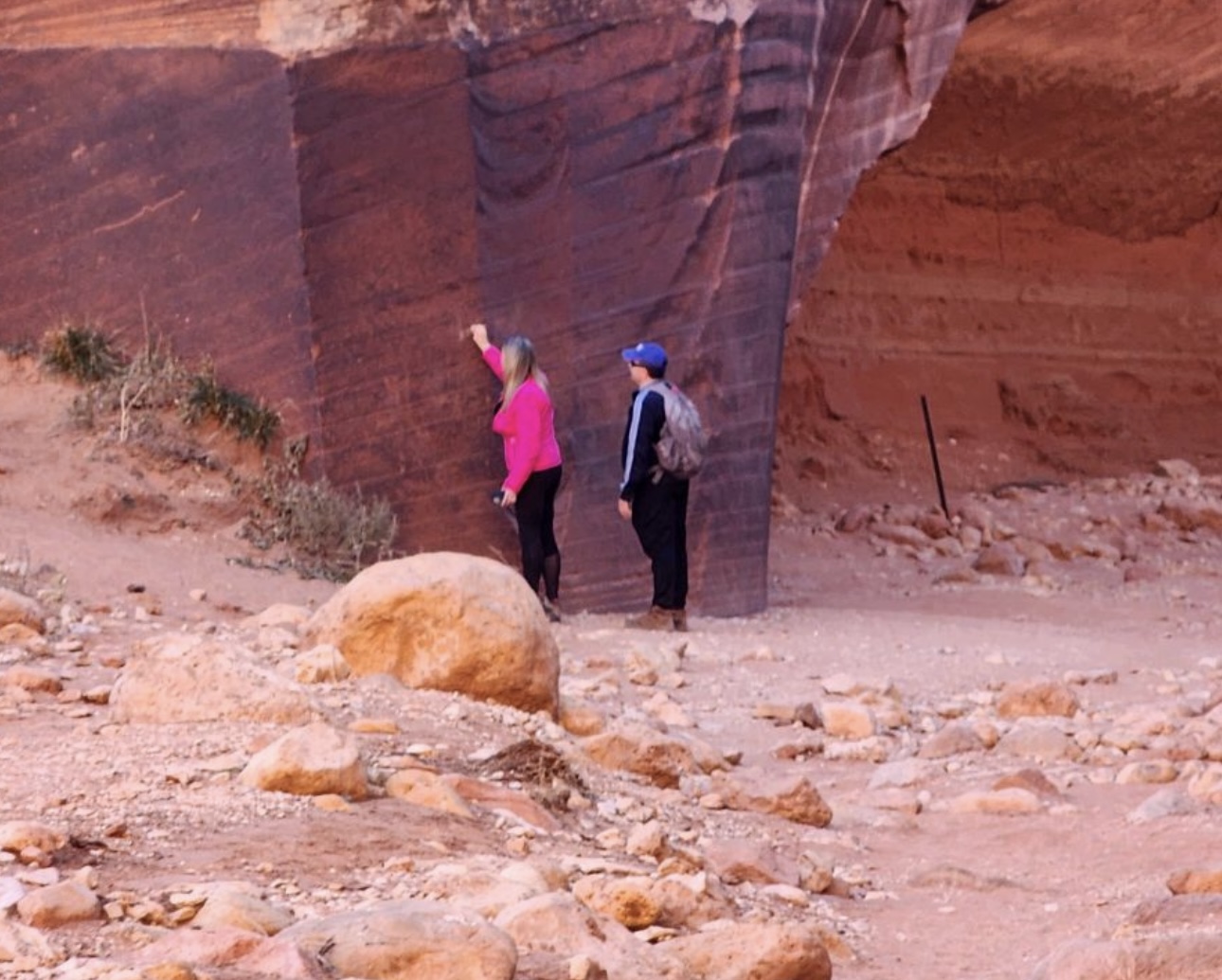Some information may be outdated.
UPDATE: Today, a judge issued a temporary restraining order to stop the project until at least Jan. 6. This story will be updated as information becomes available.
A fast-tracked project for drilling helium near the iconic Bowknot Bend in Labyrinth Canyon could proceed as soon as Dec. 23, unless a court issues an emergency injunction to stay the approval.
A joint lawsuit from the Southern Utah Wilderness Alliance, Natural Resource Defense Council, Center for Biological Diversity, and Living Rivers was filed to block the project before drilling and construction start.
If a federal court doesn’t grant the emergency injunction, the Bureau of Land Management is likely to approve the project to begin at one of the two sites within Emery County.
“Congress created the Labyrinth Canyon wilderness to preserve it for future generations,” said Landon Newell, an attorney with the Southern Utah Wilderness Alliance. “What happened is by issuing a lease, the BLM has kept the door open for development in that area, development that shouldn’t be allowed.”
The Bureau of Land Management issued a permit for Twin Bridges Resources to drill for helium on roughly 1,400 acres in the wilderness area, next to two previous leases owned by the Utah School and Institutional Trust Lands Administration, known as SITLA. The two proposed drilling sites are a mere one and a half miles from the Green River, and about two miles due west of the iconic Bowknot Bend.
Although the federal government signed both the lease and the wilderness designation in the spring of 2019, the environmental assessment of the Bowknot Helium Project only became available for public comment this fall, at the end of October.
The two proposed drilling sites are a mere one and a half miles from the Green River, and about two miles due west of the iconic Bowknot Bend.
The proposal from Twin Bridges Resources includes multiple wells dug from a consolidated drill pad using with “directional drilling,” meaning the drill line would spread out horizontally underground. No hydraulic fracturing, or “fracking,” is in the project proposal.
Twin Bridges Resources has indicated it believes a rich helium deposit lies below the Bowknot Bend site and is seeking to extract it while helium prices are on the rise due to a worldwide shortage.
In the legal motion filed by SUWA and other groups, the groups say they “only recently learned that approval of the Project was being fast-tracked, would come on December 23, 2020, and that Twin Bridges’ construction activities would immediately commence and run through the Christmas weekend,” describing the rush as “an effort to complete these activities as soon as possible (and before a Court could issue meaningful relief).”
The Bureau of Land Management issued the lease after the John D. Dingell, Jr., Conservation, Management, and Recreation Act had been passed by Congress but before it was signed into law by President Donald Trump.
“The BLM had full knowledge that the area was going to be designated as wilderness, they had no doubt,” said Newell. “Nonetheless, they rushed through their leasing decision, they didn’t prepare any NEPA analysis or environmental analysis, prior to offering the lease, and they didn’t allow for public participation.”
Instead, the Bureau of Land Management used a legal tool called a “Determination of NEPA (National Environmental Protection Act) Analysis,” or DNA, claiming that previous analyses completely cover the new project. According to the Bureau of Land Management’s own online Knowledge Resource Center, this helium project does not fit into one of the four categories when a DNA could be used, as it is a completely new project in a new place.
The court documents alleged that the proposal did not do adequate assessments of the area for extraction leases, both due to requirements of the National Environmental Protection Act, as well as regional mining lease plans. Also, the lawsuit accuses the Bureau of Land Management of not taking into account the full scope of the project’s impact on climate change via greenhouse gas emissions, a requirement due to a 2019 court decision.
“This dangerous plan is an obscene, purposeful attack on Utah’s iconic public land and wilderness protection,” said Taylor McKinnon of the Center for Biological Diversity. “We’ll do everything in our power to ensure that these lands never see the insult of this proposed extraction.”
Appreciate the coverage? Help keep local news alive.
Chip in to support the Moab Sun News.




